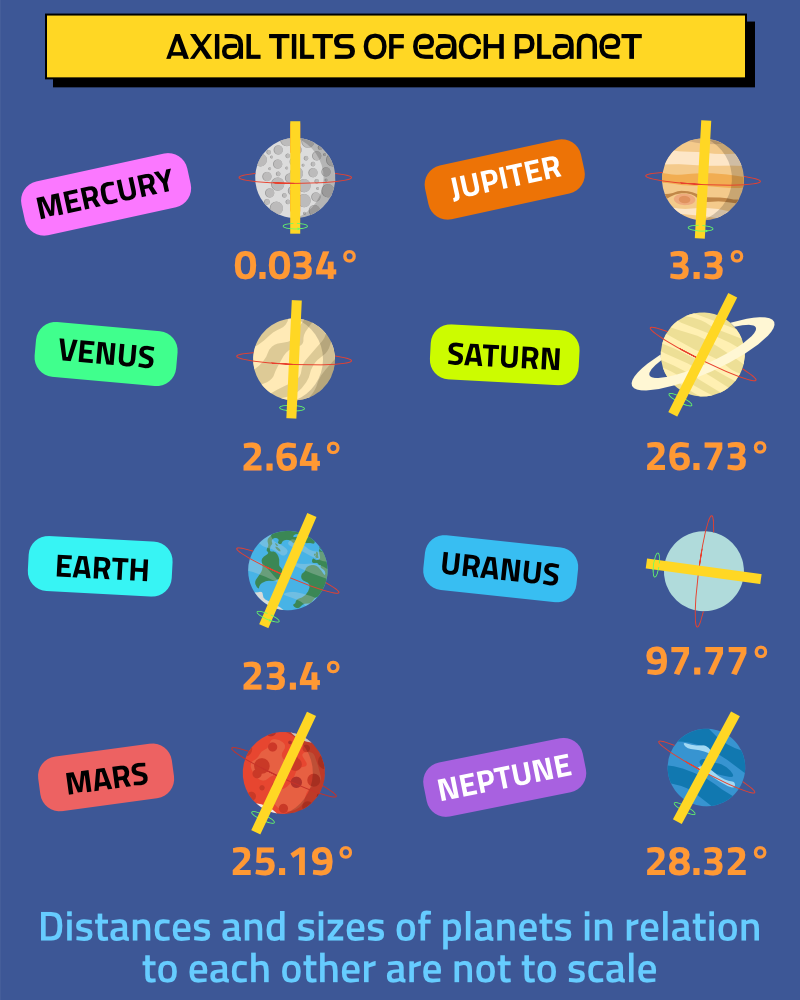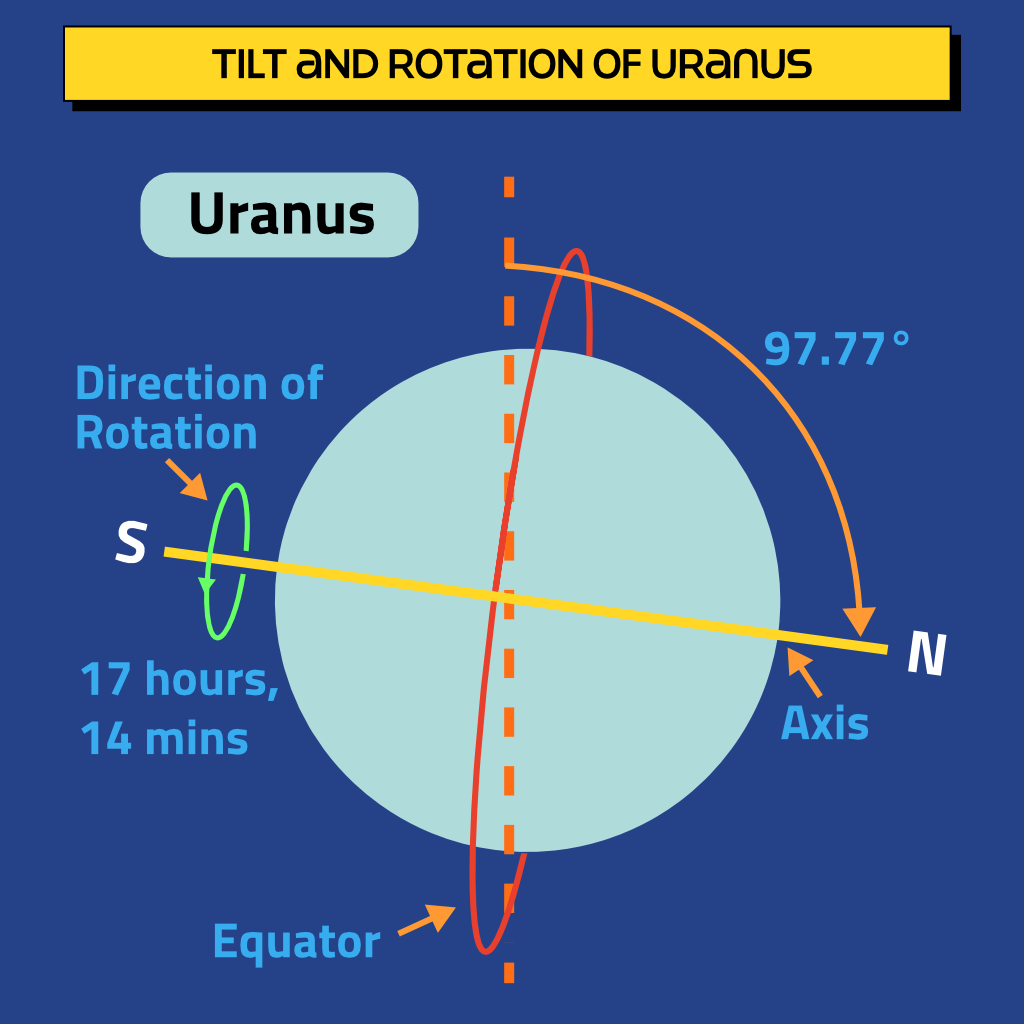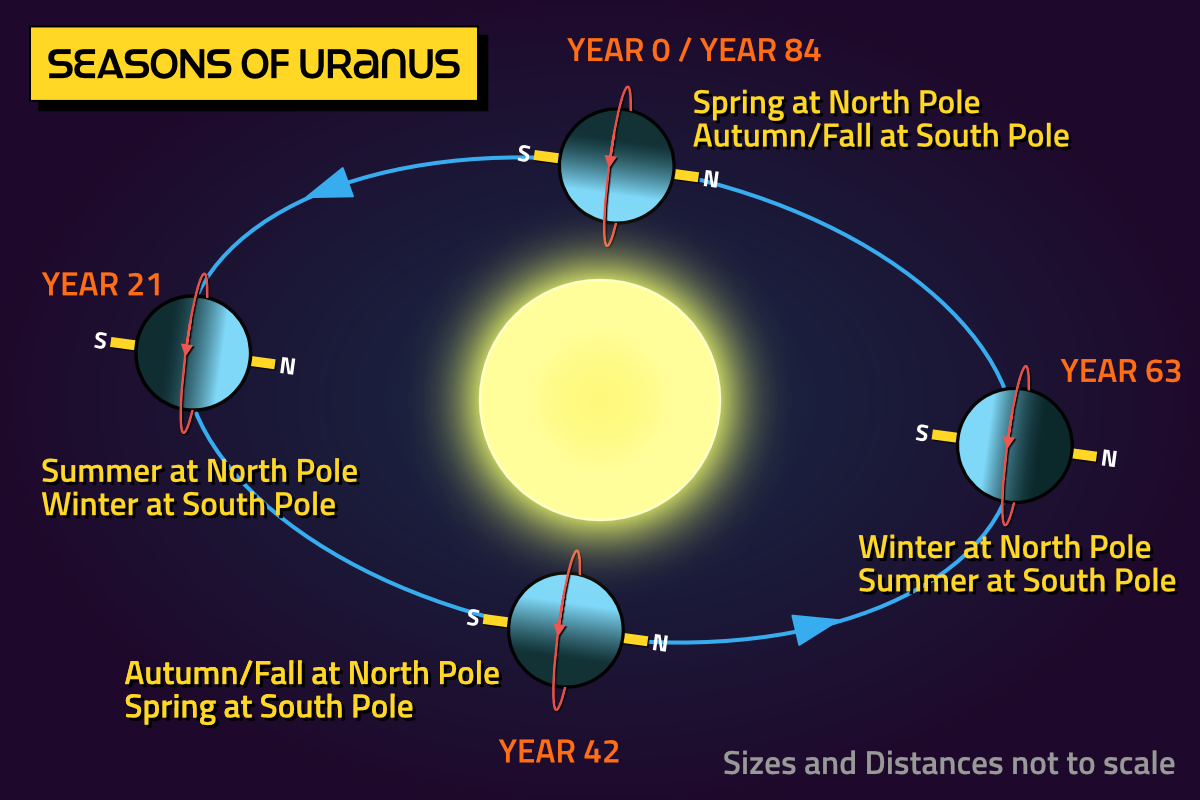Uranus and its Tilted Axis
Uranus, the seventh planet in the solar system, has only ever been visited by one spacecraft. That was Voyager 2 which reached it in 1986. Voyager 2 had previously been to Jupiter and Saturn and sent back incredible pictures of the two planets, revealing them in details never seen before. Voyager 2's visit to Uranus was a little more disappointing as photos of it didn't show much at all. Instead, Uranus appeared to be nothing more than a featureless pale blue ball. Proving that appearances can be deceptive, Uranus did have one or two surprises hidden up its planet-sized sleeves. One of those is that it travels around the Sun on its side as if it's toppled over. We'll have to think another one.

All planets in the Solar System spin on an axis. An axis is like an invisible line running through the centre of a planet, the top of it being its north pole and the bottom of it being its south pole. It is like putting a cocktail stick through a ball and spinning it around.
Most planets have a tilted axis and some are more tilted than others. Mercury is the least tilted, and almost orbits straight up. Earth and Mars have a similar tilt to each other, about 23.5 degrees for Earth and 25 degrees for Mars. This means that as they travel around the Sun, one pole points away from the Sun and one points towards it. This is what causes these two planets to have seasons. Uranus is the most tilted planet which causes its north and south poles to be where you'd expect its equator to be. This makes it seem that Uranus rolls like a barrel around the Sun, and its moons, instead of going around the centre of the planet, go over the top of it and under.

The reason behind Uranus' tilted orbit remains unknown, but some scientists think that a large body, perhaps the size of Earth, collided with it billions of years ago when the Solar System was in its infancy. Planetary formation involves the collision of rocks, with the largest ones surviving to become the planets we know today, while the rest become moons, asteroids, or meteoroids. With more planet-sized bodies floating around in the early Solar System, the likelihood of collisions between them was higher. If an Earth-sized object struck Uranus, the impact could have been powerful enough to tilt the planet over. More evidence that something collided with it is that Uranus also spins clockwise. Most other planets spin in an anti-clockwise direction. The only other planet that doesn't is Venus, and astronomers suspect a similar collision may have caused this.

As a planet so far away from the Sun, Uranus takes a whopping 84 years to complete an orbit. This means that a year on Uranus is 84 years long, and each season lasts 21 years. The unique back-to-front on-its-side orbit of Uranus means that the poles experience lengthy day and night cycles. During summer in Uranus' northern hemisphere and winter in its southern hemisphere, the planet's north pole points directly at the Sun while the planet's south pole points away. This means that the north pole experiences years of daylight and the south pole experiences years of constant night. Gradually, summer reaches the south pole when it points towards the Sun and winter reaches the north when the north pole points away.





